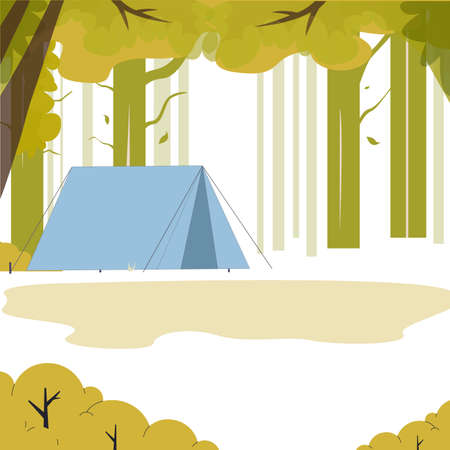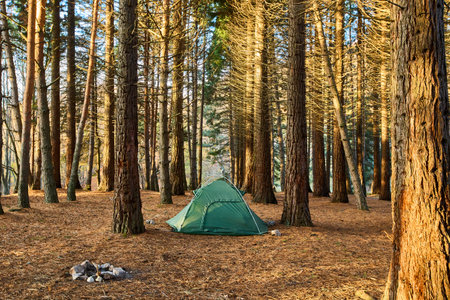Understanding Your Comfort Zone
When planning your first solo camping trip, it’s important to start by understanding what makes you feel comfortable and secure outdoors. Everyone has a different comfort zone, especially when venturing into the wild alone. Take some time to consider your personal needs and boundaries. Do you feel more at ease in a campground with amenities and nearby neighbors, or does a secluded spot surrounded by nature sound more appealing? Think about your experience level—if you’re new to camping or unfamiliar with an area, choosing a site with easy access to park rangers, restroom facilities, or even cell service can provide extra reassurance. Your comfort zone might also be shaped by factors like proximity to water sources, the types of wildlife in the region, or how far youll be from your car. By tuning in to what helps you relax and feel safe, you’ll be able to choose a campsite that supports a worry-free and enjoyable solo adventure.
2. Researching Campsite Reviews and Amenities
Before booking your solo camping getaway, it’s essential to do your homework on both campsite reviews and available amenities. In the US, trusted websites like Recreation.gov, ReserveAmerica, The Dyrt, and Campendium offer a wealth of user-generated feedback on campgrounds nationwide. These platforms let you filter by safety features, read recent visitor experiences, and check the general vibe of each spot—perfect for first-time solo campers who want peace of mind.
Look for campsites that have positive comments about security, cleanliness, and the presence of staff or park rangers. Pay attention to reviews mentioning well-lit areas, maintained facilities, and visible ranger patrols. Choosing a site with nearby restrooms or a camp host can also add an extra layer of comfort when you’re venturing out on your own.
Where to Find Trustworthy Campsite Reviews
| Website/App | Main Features | Why It’s Helpful for Solo Campers |
|---|---|---|
| Recreation.gov | Official federal site; real-time availability; verified reviews | Reliable info on national parks; direct contact with rangers |
| ReserveAmerica | Large database; detailed amenities list; user ratings | Easily compare sites for safety and convenience features |
| The Dyrt | User photos; filter by “solo-friendly”; active community input | Find candid insights from other solo travelers |
| Campendium | Crowdsourced reviews; cell service reports; boondocking options | Check connectivity and facility access for added security |
Safety Amenities to Prioritize
- Ranger Presence: Staffed campgrounds with frequent patrols feel more secure.
- Lighting: Well-lit common areas deter wildlife and unwanted visitors.
- Nearby Facilities: Restrooms, showers, and water stations offer comfort and quick help if needed.
- Campsite Layout: Sites closer to the main road or near the camp host are ideal for solo campers.
Pro Tip: Call Ahead!
If you’re unsure about a site’s safety or want insider info on the best spots for solo travelers, don’t hesitate to call the campground office or ranger station before you book. They can share updates on recent conditions and recommend specific loops or sites that are especially secure for first-timers.

3. Choosing a Well-Populated, Accessible Spot
For first-time solo campers, selecting a campsite that’s both well-populated and easily accessible is one of the smartest ways to ease into the camping experience with confidence. Being close to other campers offers an instant sense of community and safety—think of it as having friendly neighbors just a holler away if you need help or advice. In American campgrounds, this often means pitching your tent near established sites or within popular loops where families, groups of friends, and fellow solo adventurers gather.
Beyond company, accessibility is key. Opt for a spot near main trails or roads within the campground. Not only does this make it easier to find your way back after a sunset hike, but emergency access is also much more straightforward if you need assistance. It’s comforting to know that park rangers and campground hosts regularly patrol these areas, offering added reassurance for those new to solo camping.
While the idea of a remote, secluded hideaway might sound romantic, there’s something grounding about being part of the gentle hum of campground life—hearing laughter from neighboring sites or catching a whiff of someone else’s campfire coffee in the morning. For your first trip alone, embracing these little comforts can make all the difference between feeling isolated and truly at home in nature.
4. Evaluating Cell Service and Emergency Access
When camping solo for the first time, peace of mind is everything. One of the most important—and sometimes overlooked—aspects of campsite safety is making sure you have reliable cell service and accessible routes for emergency vehicles. In the U.S., where remote beauty often means spotty coverage, a little research goes a long way in helping you feel secure.
Why Cell Coverage Matters
If youre venturing out alone, being able to call for help can make all the difference in an emergency. Not all campgrounds or dispersed camping areas offer consistent reception, especially in mountainous or forested regions. Before booking, check provider maps or ask the ranger station about coverage in your chosen area.
Cell Service Comparison Table
| Location Type | Typical Cell Coverage | Provider Recommendations |
|---|---|---|
| State Parks | Moderate to strong (near entrances) | Major carriers (Verizon, AT&T) |
| National Forests | Spotty to weak | Satellite phone advised |
| Private Campgrounds | Strong (often with WiFi options) | Most carriers work well |
| Bureau of Land Management (BLM) Sites | Unpredictable, often weak or none | Hotspot device or satellite phone suggested |
Emergency Vehicle Access: A Non-Negotiable Factor
No matter how picturesque your site may be, always consider if emergency vehicles could reach you quickly. Well-maintained roads, clear signage, and proximity to main highways are key indicators of good access—especially if youre camping alone and need help fast.
Checklist: Ensuring Emergency Access
- Is the road to your site paved or regularly graded?
- Are there clear markers or posted coordinates at the entrance?
- Can a standard vehicle (not just 4WD) reach your spot?
- Is the campground staffed, or do they have a host on-site?
- How far is the nearest hospital or ranger station?
Treat cell coverage and emergency access as essentials—not afterthoughts. It’s not just about comfort; it’s about making sure your solo adventure stays safe and enjoyable, letting you focus on soaking up nature’s best without unnecessary worry.
5. Getting to Know Camp Hosts and Neighbors
Why Connection Matters When Camping Solo
When you’re camping alone for the first time, building connections with those around you isn’t just about making friends—it’s also a smart way to enhance your safety and comfort. Campground hosts and fellow campers are often experienced outdoor enthusiasts who can offer valuable local insights, lend a hand if you need it, or simply help you feel more at home in an unfamiliar setting.
Tips for Introducing Yourself
Say Hello Upon Arrival: A simple “Hi, I’m new here” goes a long way with camp hosts or staff. They’ll appreciate your openness and can give you the rundown on campground rules, amenities, and any safety tips specific to the area.
Check-In with Your Neighbors: If you’re pitching your tent near others, don’t be shy—wave hello or strike up a short conversation as you settle in. Most campers are friendly and happy to share advice about trails, local wildlife, or even their favorite campfire recipes.
Share Your Plans (Within Reason): Letting someone know where you’ll be hiking or if you plan to be out late can provide an extra layer of security, especially when solo camping.
The Benefits of Building Community
Cultivating a sense of community at your campsite not only helps deter unwanted visitors—people tend to look out for those they know—but it also enriches your camping experience. Sharing stories around the fire or swapping tips over morning coffee can make solo adventures feel less isolating and much more rewarding.
A Friendly Vibe Goes a Long Way
Remember, most people head outdoors for relaxation and connection with nature—and each other. Taking the initiative to introduce yourself fosters goodwill, ensures there’s someone nearby who knows you’re there, and ultimately helps create a safer, more welcoming environment for everyone.
6. Trusting Your Instincts and Knowing When to Pivot
There’s something powerful about being out in nature alone—it sharpens your senses and encourages you to tune into your intuition. Whether you’re parking your tent under a canopy of pines or pulling up to a lakeside spot, it’s essential to honor that little voice in your head if something feels off. Even seasoned campers know that trust is key when it comes to personal safety.
Listen to Your Gut
Our instincts have evolved for a reason. If you arrive at a site and notice odd vibes—maybe there’s too much foot traffic, nearby campers seem rowdy, or you spot signs of wildlife that make you uneasy—it’s absolutely okay to reconsider your choice. Feeling secure isn’t just about following rules; it’s about trusting yourself enough to take action when needed.
Have a Backup Plan
Before heading out, scope out alternative campsites nearby. Download offline maps and save contact numbers for the park office or ranger station. Having a plan B gives you confidence to move if your first pick doesn’t feel right. Remember, changing sites isn’t an admission of defeat—it’s a sign of self-respect and resourcefulness.
How to Switch Sites Smoothly
If you decide to relocate, do so during daylight for better visibility and easier navigation. Keep your gear packed as much as possible until you’re sure about your spot, and let someone back home know about the change if you can. Most importantly, remind yourself: You deserve to feel comfortable while exploring the outdoors solo. A little extra effort today means peace of mind tonight.
Camping alone is an empowering adventure, but true confidence comes from honoring your feelings every step of the way. Trust yourself—you know what security feels like for you, and it’s always okay to pivot until you find it.


